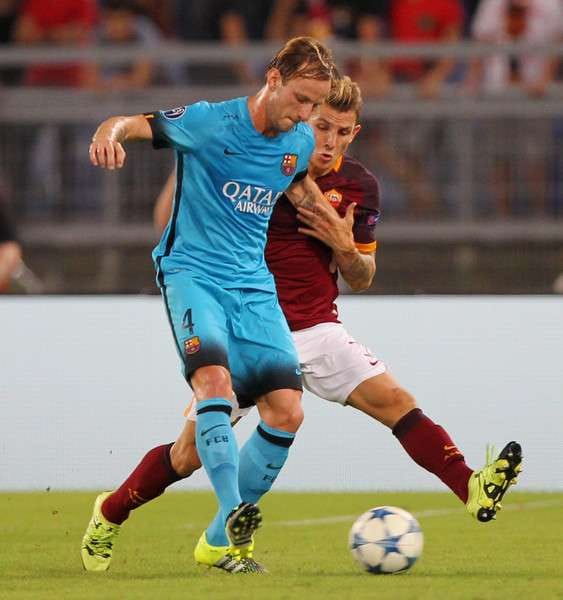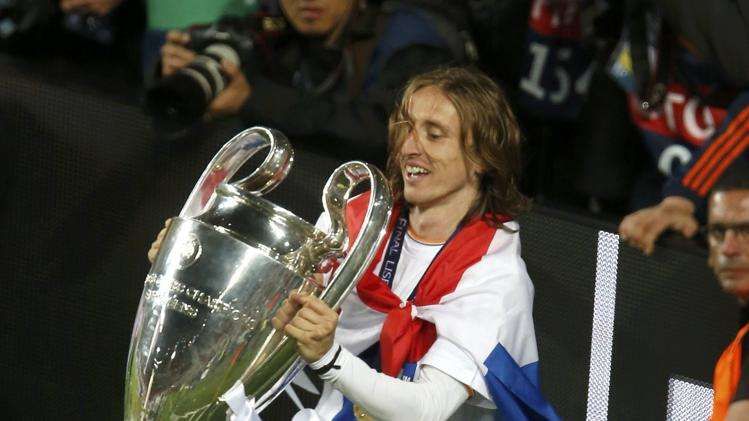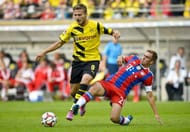A casual glance at the Champions League results over the last five seasons is enough to tell us how dominant these two footballing powerhouses have been: in the competition in particular, and in world football in general terms. At the highest level, no team thrives at the same level for such lengths of time without having something exceptional in its inventory of weapons. Both Bayern Munich and Barcelona are blessed in this sense, with some of the very best and most lethal players in world football.
But is that really all that sets them apart? Is there something which they’re doing that other teams aren’t? Is it just one particular thing or many different aspects of their play that is the difference between excellent teams like, say, PSG or Juventus, and these two?
Perhaps these two squads have a completely different mindset and view of the game, which is why when they set foot on the pitch, instead of booting clearances down the field, they look to elaborate and delay the out-ball that converts defense into offense in one swift movement. But if that were to be the case, wouldn’t Arsenal, among other clubs, rank alongside these two, given how good some of their technicians in midfield are capable of playing?
Winning the midfield battle with the ball
The one specific aspect of attacking play that Bayern and Barcelona have become adept at; something which other teams don’t do enough but should be doing, is the way they maneuver the ball around the central areas in the opposition half. There is not a single team in the world which does this at a level of ease and technical brilliance that Bayern and Barca have done over the past season-and-a-half.
Every time Lionel Messi is able to drop deep and play quick one-twos in midfield, it’s because he has the assurance that he only needs to make a nonchalant turn and give the ball to his midfielders to take the pressure off the ball. Bravo, Ter Stegen and Neuer are some of the safest and most assured goalkeepers in world football and, should the need arise, they are always ready to rehash the ball into the opposition half.
Luis Enrique has done a laudable job of changing things around from the way Barca played under Pep Guardiola and has made them a lot faster and more positive in their attacking play. Thus, while Xavi would rarely make forward runs on or off the ball, Ivan Rakitic, Andreas Iniesta and Arda Turan are much more proactive and willing to take on players and play the ball through those central areas.
This, while compromising their ability to keep the ball for long periods, is ultimately a positive switch as the forwards get more service and more time on the ball.
Barcelona’s attacking trio makes the difference
What makes Barcelona an even more potent attacking team than Bayern, currently, is the ability of MSN – particularly Messi and Neymar – to negotiate those central areas with their dribbling touch and close control. They can drop deep, drawing their markers along with them, and then play a killer ball into the vacated spaces. Or, they could take on and beat those defenders and stretch the defense on their own, unaided, before finding teammates in and around the penalty area.
What Bayern does instead of dribbling out of those tight areas is to constantly change the areas they’re attacking from. If an attack seems to be stagnating on one wing, they play it back to Lahm or Alonso, who ensure that the ball is then sprayed out to the other wing to commence a new attack without breaking the old one.
This is what Real Madrid miss out on when Luka Modric is injured or plays too deeply. In his absence, Real have to rely solely on wing play, and that is a major handicap especially against physical teams like Atletico Madrid, who they have routinely lost to in the past two years. James Rodriguez, Isco or Gareth Bale are not the kind of players who routinely drop their shoulders and slalom between the defensive midfielders in the opposition side.
It is for this reason that Guardiola saw the potential in Philipp Lahm to be played in central midfield when he had the best right back of the generation at his disposal. It is also the reason why Seydou Keita and Yaya Toure were pushed down the pecking order by a 20-year-old Sergio Busquets.
A Busquets who isn’t quite the physical phenomenon one would expect a player of his height to be. Nor does he have great tackling ability, the most confrontational approach to playing the game or, indeed, the pace to match the game’s great forwards.
But both Lahm and Busquets are probably the world’s best when it comes to retaining the ball in the areas around the centre circle and up to 10 yards further up the pitch from there. With their presence, it has been easier for the Schweinsteigers, Rakitics, Thiagos, Xavis, Alonsos and Iniestas to pop neat passes through the opposition’s midfield lines to create defensive mismatches.
The limitations of playing these silkier players in place of more combative choices available in the squad have been very marginal, and only apparent in the rare off-games that every team is bound to encounter over the course of the season. By and large, this domination of the central areas and the willingness and ability to create openings through the central areas is how Bayern and Barcelona have both kept every club they face on their toes.




